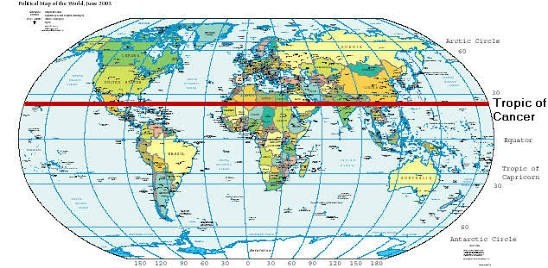Q:
The Tropic of cancer does not pass through
Answer & Explanation
Answer: B) Pakistan
Explanation: 
The Tropic of Cancer is 23.5 degrees north latitude. It passes through 16 countries across 3 continents. They are
1. In North America,
Mexico and Bahamas(Archipelago).
2. In Africa,
Niger, Algeria, Mauritania, Egypt, Libya, Mali and Western Sahara.
3. In Asia,
Myanmar, Omen, Bangladesh, India, Saudi Arabia, China, United Arab Emirates and Taiwan.
The Tropic of Cancer also passes through 6 Water Bodies on the whole. They are
1. Indian Ocean,
2. Atlantic Ocean,
3. Pacific Ocean,
4. Taiwan Strait,
5. Red Sea (and)
6. Gulf of Mexico.
Hence, The Tropic of cancer does not pass through Pakistan.
View Answer
Report Error
Discuss